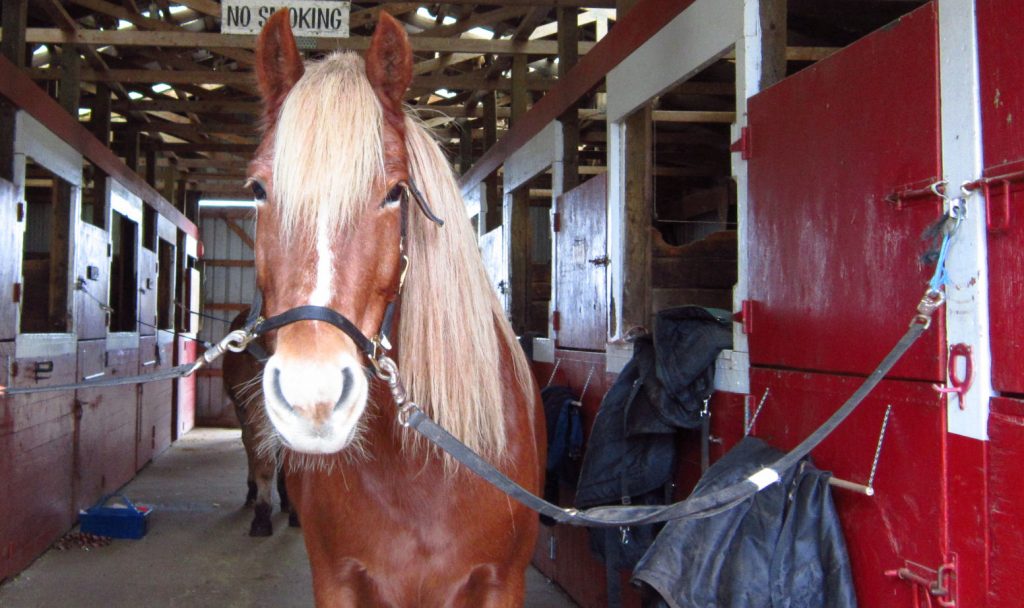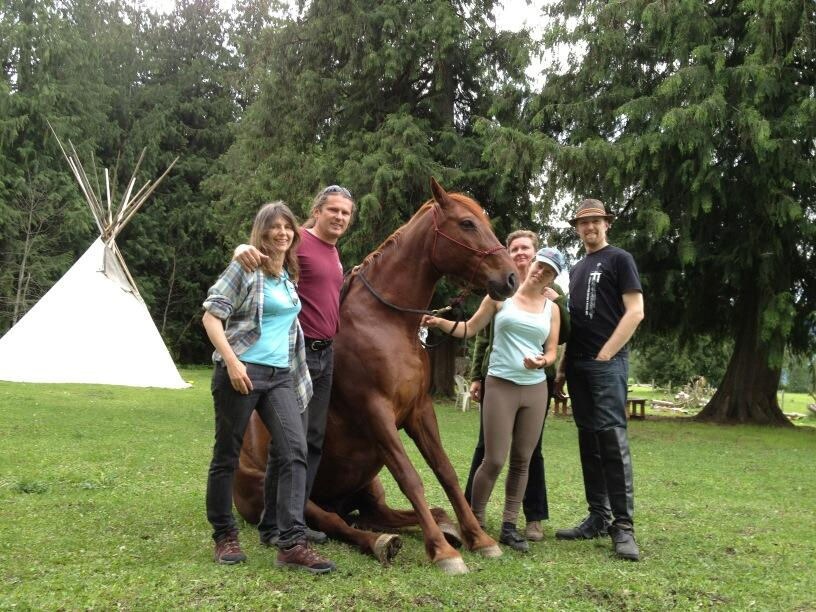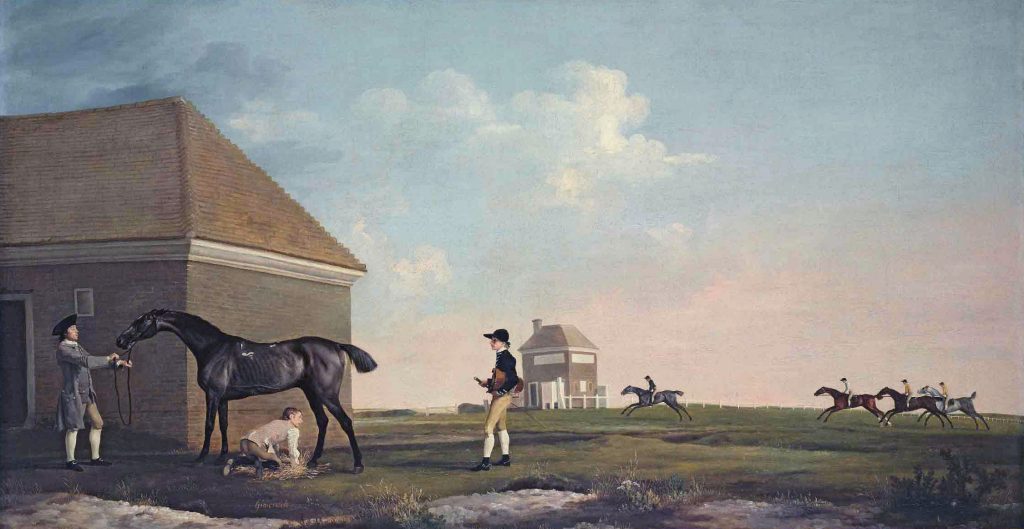Horsemanship Level 2: Grooming
By the time you are testing Level 2 you should be able to groom your horse quickly and confidently. On the checklist for Level 2 is:
5. Groom horse; three reasons for grooming; common sense around horse.
Grooming, and the reasons for grooming are pretty well covered in this level one post: The Well Groomed Horse. Take a moment to review that post, and the video of a complete grooming.
Grooming and Common Sense
The way you interact with your horse during grooming says much about your level of competence and confidence as a horseman. A groom who takes charge of the horse and the surroundings creates a safe enviroment for herself, her horse, and bystanders. Someone who is nervous, disorganized, or allows the horse to be in charge is setting herself up for mishaps at the least, or even serious accidents.
Environment
Whether you're grooming in cross-ties, at a hitching rail, or in a stall or paddock, make sure you have adequate room to move around your horse. The last place you want to be is trapped between a 1000 lb animal and a wall, with no room to get out of the way. Keep your grooming tools and tack organized and out the way, so neither you nor your horse accidentally step or trip on them.
Your Dress
Long hair should be tied back, and loose jewellry tucked away. You should be wearing practical clothing and boots or shoes with a smooth firm upper. Never wear flip-flops or sandals around a horse! A front hoof concentrates about 300 lbs onto the rim of hard hoof, sometimes with an iron shoe. If you work around horses I guarantee that at some point one will inadvertently step on your foot. If you're wearing boots, it will hurt, and you may temporarily lose a toenail; if you're wearing sandals, it will crush bones.
Your Horse's Dress
Always put a halter on your horse, even if you are grooming in the stall or paddock. The halter is a signal to your horse that she's on the clock. No matter how placid and friendly the horse, if you don't have a halter on and she decides to wander away, you've lost authority, and she no longer feels she needs to listen to you.
Tying
If you tie your horse to a post or rail, use a quick release knot tied to a loop of twine that will break if your horse suddenly pulls back. It is much easier to catch a horse that has simply broken the weak link of a piece of string, than one that has broken its halter or pulled down a fence, frightening and possibly injuring himself and others in the process.
Cross-ties also need to be attached to a loop of twine rather than directly to the wall, and should have quick-release buckles that attach to each side of the nosepiece of the halter. If a horse pulls backward in cross-ties that don't break away he can flip over and seriously hurt himself.
My favourite method is ground-tying. A ground-tied horse is one who has been taught to stand with his lead-rope simply dropped in front of him on the ground. It is not difficult to teach a horse to ground-tie, but it takes time and the patience to calmly move a horse back into position every time he takes a step out of place while you are working with him. However, its well worth the effort, as you know that, no matter where you go, you have a safe place to 'tie' your horse.
Your Demeanor
A good groom moves calmly and efficiently around the horse. Keep one hand on your horse as you move to reassure him and let him know where you are. Talking in a soft voice will do this as well. When you move behind the horse stay as close as possible to him, keeping your arm over his rump as you switch sides. If he kicks, he won't get much momentum, and he'll likely only nudge you or hit your lower legs.
Don't allow yourself to be distracted. Horses almost always give warning signs before they kick or bite (more on that next week), and if your focus is on your horse you will notice these before they happen. Most people who are kicked or bitten had their attention elsewhere when it happened. Focussing on your horse also allows you to detect his moods, what he likes and doesn't like during grooming, and what calms him or makes him more fidgety.
Your Horse's Demeanor
Ideally your horse will stand placidly, not moving her feet at all, except when you pick them out. In reality most horses fidget or shift to various extents while tied. Your job is to be calm and insistent. If your horse continually swings his haunches around, you need to continually push them back into place. If she decides she's held her hoof up long enough and puts it down before you're done picking it out, you need to firmly prevent her from doing so (most horses will give up pulling their feet away if you calmly hold the hoof at the toe and lift when they pull).
A horse that steps into your space, whether intentionally or distractedly, is dangerous. By unemotionally moving your horse back out of your space whenever he does that, you set safe boundaries and let him know you are in control of the situation. Be persistent. Horses like to know someone else is the boss. It makes them feel safe, and when they feel safe they relax and stand still. You'll know your horse is relaxed when he lowers his head, yawns, chews or lets his eyelids and ears droop. Congratulations! Your horse trusts you, and your job of grooming him is now that much easier.
Benefits
The relationship you build with your horse during your grooming sessions goes far beyond the cross-ties. A horse that trusts you and acknowledges your leadership is easier to catch in the field, easier to tack up, easier for the vet and farrier to work with, and easier to ride. A horse that doesn't yet trust you will be more prone to spook or balk in new situations, or refuse fences in the arena. A relaxed horse can also stretch through his back, release his jaw, and give you his poll under saddle, making him capable of engagement, throughness, collection, and all those other higher level qualties we look for in a mount.
next week: warning signs
June Cavaliere Offerings
It's a busy month here at the barn -- so busy we're starting it a day early!
Mounted Games Practice
Friday 31 May, 5 - 7pm
cost: $15 with school horse; $5 with own horse
It's time to start honing those mounted skills at arms to prepare for our annual Knightly Games Tournament (tentative day September 29th). Our first games practice will be held this Friday. Riders must have Riding Level 1 or equivalent to use school horses. Further Friday practices will be added later in the month.
Cavaliere Classes 3 & 4
Sundays 1 & 22 June, 4 - 7:30pm
cost: $60
Saturday is class 3 of the current Cavaliere series. Horsemanship topics are:
Levels 1 & 2: feed & stabling
Levels 3 - 6: foot & shoeing, diseases of the foot, conformation & bone
Weather permitting we'll do cross-country schooling for riders level 3 and up.
Intro to Mounted Combat
Sunday 2 June, 10am - 12:30pm
cost $99; $149 for both Intro and Mounted Combat workshop till 4pm
At this time there is only one spot available in the Intro to Mounted Combat workshop, so snap it up if you want to start learning how to swing swords from horseback! Your next chance after this will be August.
Mounted Combat Workshop
Sunday 2 June, 1 - 4pm
cost: $60
Integrated Package: take Mounted Combat and both Cavaliere Classes in June for $120 (2 classes for the price of 3).
Focus for this month is spear. This one only comes around a couple of times a year, so don't miss out!
Mounted Archery News
Keen to do more mounted archery after the workshop earlier this month, four of us went on a field trip to Mt. Currie to visit our friends at Borsos Torz Horse Archery club. Our hosts Robert, Zoltan and Natalia saddled up some war ponies for us and we spent the morning shooting from horseback. We finished with a lovely ride by the river to cool down before we stopped for lunch. After our lunch break we climbed the bluff to do some distance shooting, then tried our hand at skeet archery, and finally took turns shooting from Woody the rocking horse.

Academie Duello Cavaliere Program
